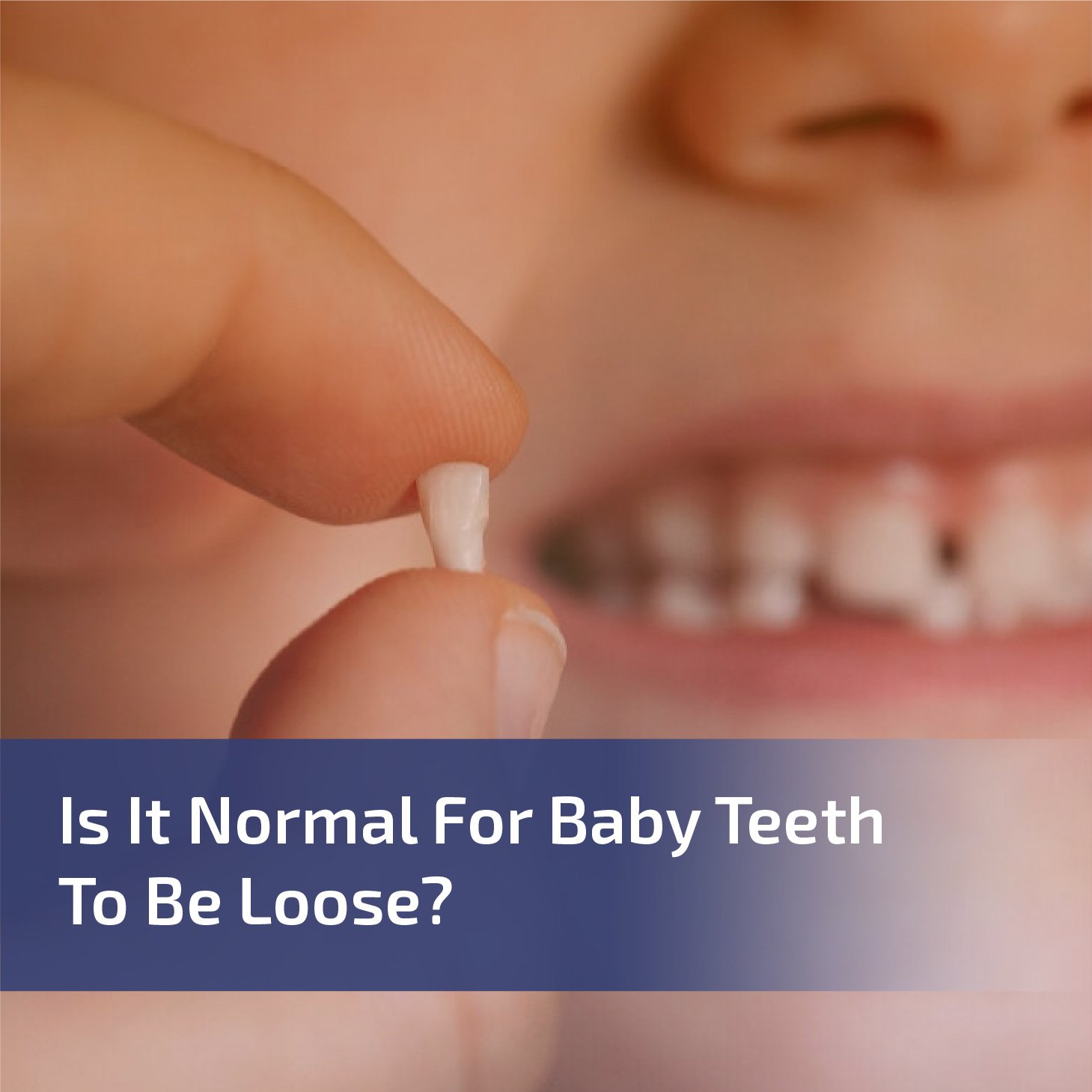
Childhood is marked by numerous milestones, one of the most notable being the loss of baby teeth. As parents or caregivers, it’s common to wonder whether it’s normal for these baby teeth, or primary teeth, to become loose.
This process, although natural, can often be met with a mix of excitement and apprehension by both children and their guardians.
In this guide, we’ll delve into the intricacies of this dental transition, shedding light on why baby teeth become loose and what to expect as permanent teeth make their debut.
Is It Normal for Baby Teeth to Be Loose?
Loose baby teeth are a completely normal and natural part of a child’s dental development. The process of losing baby teeth is known as exfoliation. Baby teeth typically start to become loose around the age of 5 or 6, and this process continues until around the age of 12 or 13 when all the permanent teeth have erupted.
During this phase, the roots of the baby teeth dissolve, allowing the tooth to become loose and eventually fall out. This makes way for the permanent teeth to emerge. The process of exfoliation is essential for the healthy development of your child’s teeth and should not be a cause for alarm.
Why Do Baby Teeth Become Loose?
There are several reasons why baby teeth become loose:
1. Natural progression:
As mentioned earlier, the loosening of baby teeth is a natural progression in dental development. It is a sign that the permanent teeth are ready to take their place.
2. Root resorption:
Root resorption refers to the gradual dissolution of the roots of the baby teeth. This process is essential to allow the permanent teeth to erupt properly. The roots of the baby teeth slowly dissolve, causing them to become loose and eventually fall out.
3. Pressure from permanent teeth:
As the permanent teeth begin to emerge, they exert pressure on the roots of the baby teeth. This pressure contributes to the loosening and eventual loss of the baby teeth.
4. Gum tissue changes:
The gum tissue around the baby teeth also undergoes changes during the exfoliation process. The gum tissue becomes softer and more susceptible to movement, leading to loose baby teeth.
5. Trauma or injury:
In some cases, trauma or injury to the mouth can cause baby teeth to become loose prematurely. If your child experiences an accident or injury that affects their teeth, it is essential to consult a dentist for a thorough examination.
What to Expect When Baby Teeth Become Loose?
When baby teeth become loose, there are a few things you can expect:
1. Increased mobility:
You will notice that the baby’s tooth feels more mobile than usual. It may wobble or move when your child eats or brushes their teeth. This increased mobility is a natural part of the exfoliation process.
2. Gaps between teeth:
As the baby’s teeth become loose and fall out, there may be temporary gaps between your child’s teeth. This is normal and will be filled in as the permanent teeth erupt.
3. Mixed dentition:
During the exfoliation process, your child will have a mix of baby teeth and permanent teeth. This stage is known as mixed dentition. It is important to continue proper oral hygiene practices during this time to ensure the health of both baby and permanent teeth.
4. Some discomfort:
Your child may experience mild discomfort or sensitivity as the baby teeth become loose. This is normal and can be managed with gentle oral care and over-the-counter pain relievers if necessary.
Signs and Symptoms of a Normal Loosening Process
The process of baby teeth becoming loose and eventually falling out is a natural progression in a child’s oral development. Recognizing the standard signs of this transition can put parents and caregivers at ease. Here’s what to typically expect:
1. Observable Movement of the Tooth:
The first and most apparent sign that a baby tooth is ready to come out is its mobility. A child might notice that they can wiggle the tooth back and forth with their tongue or finger.
2. Mild Discomfort or Sensitivity:
As the tooth becomes loose, the child might experience slight discomfort or sensitivity when biting down or consuming cold or sweet foods. This sensitivity is generally mild and temporary.
3. Changes in Tooth Position:
Over time, as the permanent tooth pushes up, the baby tooth might appear slightly elevated or tilted in its position.
4. Gum Redness or Swelling:
The area around the loose tooth might appear a little red or swollen. This is a typical response of the gums adjusting to the emerging permanent tooth beneath.
5. Spacing Between Teeth:
Especially if a neighboring baby tooth has already fallen out, there might be increased spacing or gaps between teeth.
6. Natural Progression:
A baby tooth typically doesn’t go from being firm in place to extremely loose overnight. Instead, the loosening is a gradual process that occurs over several weeks.
Conclusion
It is entirely normal for baby teeth to become loose as part of the natural dental development process. The exfoliation of baby teeth paves the way for the eruption of permanent teeth. Parents should be aware of the signs and symptoms associated with loose baby teeth, and understand that each child’s timeline may vary. Remember to maintain proper oral hygiene practices throughout this phase, and consult a dentist if you have any concerns about your child’s dental health.